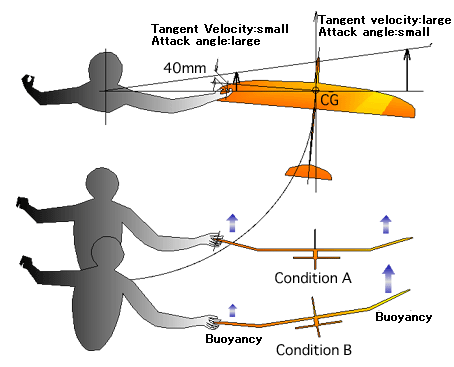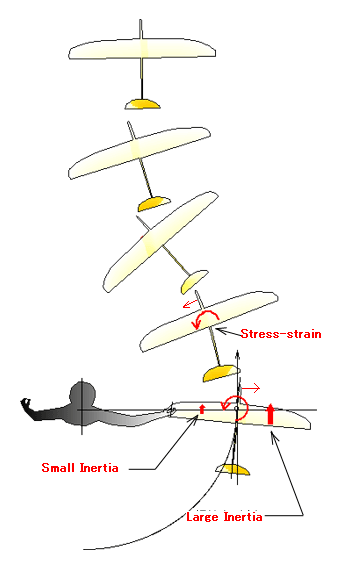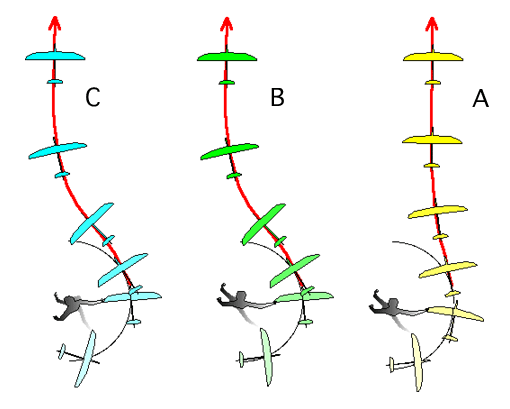When flier hang on the DLG and rotate his arm, the speed at outer is higher than at the inner. The location of the pin is important. The line connecting pin and CG is drawn in the right figure. There is another line that connect the center of the discus launch with CG. If the pin and CG locate at the same distance from trailing edge, then the DLG fly like condition B, because the difference of the speed, hence the difference the difference of buoyancy. If the pin locates a little backward (40mm in the figure) compared with CG, then the DLG fly with angle shown in the right figure. the right wing tip end follows the radius line of discus launch. The glider flies with angle against the radius line shown in the right figure. Under this condition the glider flies as shown in the middle of the right figure, because the attack angle of the left end of the wing is larger than the attack angle of the right end. Therefore inner buoyancy becomes larger compared with condition A. As a result of it, the both end have almost the same buoyancy. it means the DLG will fly without slanting, hence the DLG will fly through straight forward. It is expected that there might be less loss of speed and attain the higher altitude.
Finally, the pin should locates a little backward ( about 40mm) as shown in the right figure.

This is my own understanding on the momentum force at launching DLG . Until the DLG is held by hand during launching, There is smaller inertia at the inner point than the inertia at outer location. After releasing the DLG, the difference of the inertia of the inner and the inertia of the outer will cause momentum force. It results in the rotation toward left direction in case of the right figure. But the rudder will face left direction against the initial flight direction. It cause the DLG turn back to the right and return to the initial flight direction. I think it might be the reason that the yaw occurs at launching.

1) Pattern A is the flight pattern of Radina DLG in which all servos are accommodated in the fuselage. All of heavy parts are concentrated in the fuselage. In this case, the inertia caused mostly at fuselage location.
2) Pattern B is the flight of Gladiator I in which servos are installed in the wing. Therefore the mass are dispersed along the wing. The inertia caused by the distributed mass of the servo and battery. In this case, the above discussion might be applicable and the bigger yaw will be caused.
therefore the mass concentration will improve the flight pattern. Pattern B losses the speed , therefore altitude.
3) Pattern C is bad launching. When the DLG is held by the fingers too tightly, the release timing will be delayed and cause winding flight pattern. Those are not real picture, but the picture imagined by Mr. Kanoh. But he wrote this particle based on his much experience. It will give some hits for us to fly DLG better.

